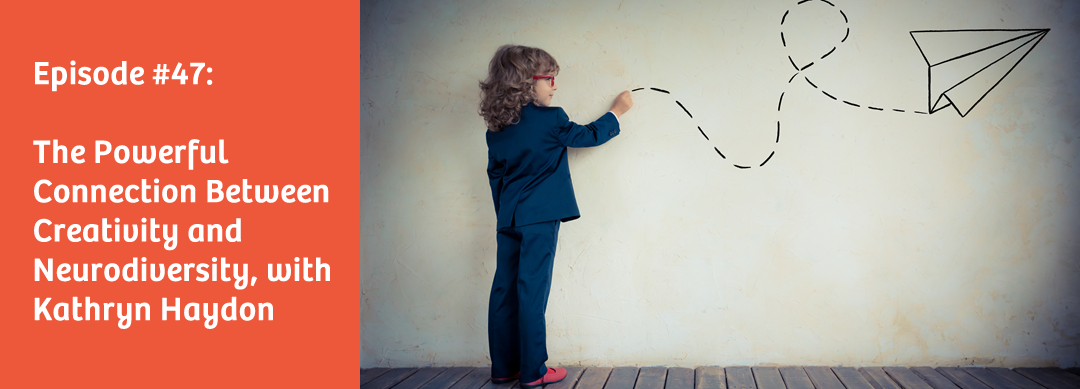
In this episode of the TiLT Parenting Podcast, I sit down with creativity expert Kathryn Haydon to talk about the strong correlation between creativity and neurodiversity, especially giftedness. After working in the classroom as a teacher, Kathryn recognized the power of teaching students in a way that engages their creative selves, and also noticed how children who thrived in her class were frequently labeled as “problem students” once they matriculated and moved into classrooms where their creativity wasn’t tapped into.
In our conversation, Kathryn explains whey every child (and person) is creative and why she so firmly believes that disruptive behavior in the classroom is something to be embraced, as it’s an indicator that the child has tremendous creative gifts. Kathryn’s passion for gifted and creative education are incredibly inspiring, and her vision for helping schools and parents use a “strengths-based” approach in the way they teach and parent is one we can absolutely get behind!
 About Kathryn: Kathryn Haydon writes, speaks, mentors, and consults to support an educational paradigm based on student strengths and creative thinking. She is a speaker and specialist for families, schools, and organizations nationwide. Kathryn co-authored Creativity for Everybody (Sparkitivity, 2015); writes for publications on education, creativity, and parenting creative and gifted children; and is a published poet. Kathryn founded Sparkitivity, to engage “square peg” students and to support the parents and educators who want them to succeed.
About Kathryn: Kathryn Haydon writes, speaks, mentors, and consults to support an educational paradigm based on student strengths and creative thinking. She is a speaker and specialist for families, schools, and organizations nationwide. Kathryn co-authored Creativity for Everybody (Sparkitivity, 2015); writes for publications on education, creativity, and parenting creative and gifted children; and is a published poet. Kathryn founded Sparkitivity, to engage “square peg” students and to support the parents and educators who want them to succeed.
THINGS YOU’LL LEARN FROM THIS EPISODE:
- The history of different thinkers being misunderstood in the classroom
- The high correlation between creativity and people who are differently wired
- Why society needs people who think differently
- How living in a deficits-based paradigm harms creative thinkers and can result in strengths manifesting as negative characteristics
- Why Kathryn sees the “prairie” as a powerful metaphor for human intelligence
- How to advocate for our creative kids in a traditional school setting
- The importance of finding people who see our child’s differences as strengths
RESOURCES MENTIONED:
- Sparkitivity (Kathryn’s website)
- Creativity for Everybody by Kathryn Haydon
- Sir Ken Robinson’s Ted Talk: Do Schools Kill Creativity?
- Creative Schools: The Grassroots Revolution That’s Transforming Education by Sir Ken Robinson
- The Element: How Finding Your Passion Changes Everything by Sir Ken Robinson
- Cradles of Eminence: Childhoods of More Than 700 Famous Men and Women by Victor Goertzel
- StrengthsFinders 2.0 by Tom Rath
- Susan Cain’s Ted Talk: The Power of Introversion
- The Dot by Peter Reynolds




